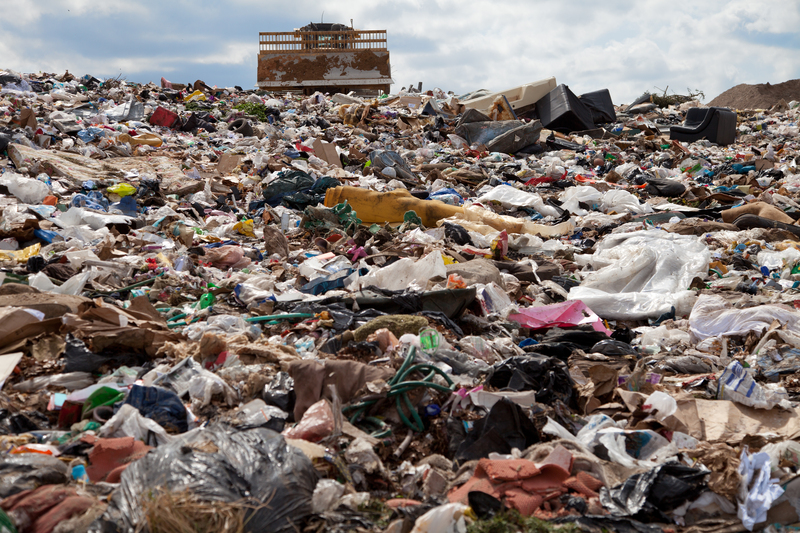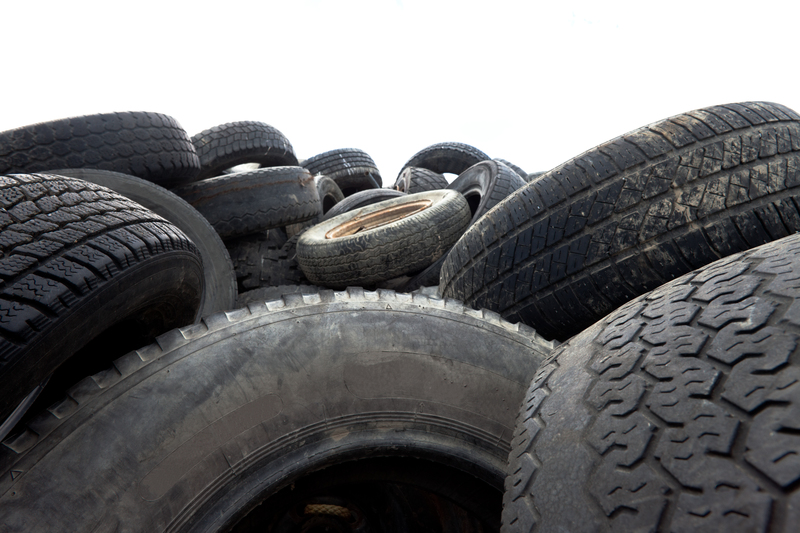How to Avoid Overspending on Bulky Item Waste Removal
Are you dreading the cost of bulky item waste removal? Disposing of unwanted large items like furniture, mattresses, and appliances can quickly become expensive if you're not careful. But what if we told you that with a little strategic planning, you can avoid overspending and even find ways to remove bulky junk for free or at a minimal cost? This comprehensive guide will show you exactly how to avoid overspending on bulky item waste removal while staying compliant with local regulations, and even making the process environmentally friendly.
Understanding Bulky Item Waste Removal
Before diving into the different ways to save, it's crucial to understand what counts as bulky waste. Bulky items are generally defined as any large household objects that can't be collected through regular curbside garbage services. Common examples include:
- Mattresses and bed frames
- Sofas, couches, and armchairs
- Dressers, tables, and other large furniture
- Refrigerators and freezers
- Washing machines, dryers, and dishwashers
- Televisions and large electronics
- Outdoor items like grills or patio sets
Disposing of these items often involves hiring a junk removal company, scheduling a municipal pick-up, or renting a dumpster. But these services can get expensive very quickly. Why pay more than necessary?

Why Does Bulky Waste Removal Become Expensive?
Bulky waste disposal services charge for their labor, transport, landfill fees, and sometimes for recycling items. Some municipalities offer limited free pickups, but most have strict guidelines and may even refuse certain items. Junk removal companies invoice based on item quantity, volume, and sometimes additional weight or difficulty accessing the items.
- Hidden costs: Convenience fees, surcharge for stairs, after-hours removal
- Distance: Long driveways or inaccessible locations cost more
- Environmental fees: For hazardous materials
All these add up, pushing the price tag for a single removal to $100-$800 or more. Bigger items, more cost.
Smart Strategies to Avoid Overspending on Bulky Item Waste Removal
1. Leverage Municipal Bulky Item Pickup Programs
Many cities provide annual or seasonal collections for bulky waste at little to no charge. These programs are generally restricted to residents and have very specific requirements:
- Setout limits (e.g., two large items per pickup)
- Scheduled days/events, not on-demand
- Advance booking or notification required
- Accepted material lists
How does this help avoid overspending? If you can time your decluttering to coincide with these government services, it can be entirely free of charge. Visit your local waste management website or city hall for details--don't miss these cost-saving opportunities!
2. Donate or Sell Usable Bulky Items Before Paying for Removal
One person's junk is another person's treasure: before you shell out cash to haul away that sofa or table, consider donating or selling it. Many charities, thrift stores, or non-profits offer free pickup services for large furniture and appliances in good condition.
- Post items for free on online marketplaces (Facebook Marketplace, Craigslist, Freecycle)
- Contact local charities (Habitat for Humanity, Salvation Army, Goodwill) for pickup
- Host a curb alert: Place the item at the curb with a "free" sign
This method often saves you money while helping others--a true win-win!
3. Explore Appliance and Electronics Store Haul-Aways
Are you replacing an old fridge, washing machine, TV, or mattress? Most major retailers provide haul-away or recycling services when you buy a new item, usually for a small fee--or sometimes even free as an incentive. When shopping, always ask about free removal of bulky appliances with your purchase.
- Best Buy, Home Depot, Lowes, Costco, Ikea, and others have programs
- Some cities sponsor electronics recycling drop-off events for free
Pro Tip: If you're making a qualifying purchase, let the retailer deal with the old item instead of paying for removal.
4. Try Peer-to-Peer or Crowdsourced Removal Apps
Services like TaskRabbit, LoadUp, Got Junk, or even local Facebook groups let you find individuals or small businesses offering junk hauling. This peer-to-peer model is often cheaper than big national brands as rates are set competitively.
- Negotiate a flat or hourly rate
- Review provider ratings and past work
- Compare multiple quotes before choosing
Always clarify pricing upfront and ensure they are licensed and insured if required in your locality.
5. Bulk Removal: Combine and Coordinate With Neighbors
If your neighborhood is having multiple residents with large-item waste, combining these for a group collection can lower the cost for everyone. Most waste haulers offer discounts for bulk pickups or multiple stops in the same area.
- Organize a "bulky item removal day" on your street
- Share costs among participants
- Coordinate with HOAs or local councils for special deals
This approach significantly reduces the per-item price.
6. Do-It-Yourself Hauling to Save Money
If you have access to a truck or trailer, you might handle the bulky waste removal yourself. Local landfills, transfer stations, or recycling centers often accept large items for a small fee--or sometimes for free for residents.
- Call ahead for fees and disposal rules
- Get help loading/unloading heavy items
- Sort items by type: landfill, scrap metal, e-waste, etc.
Be sure to factor in your time, effort, gas, and potential dump fees, but it's usually cheaper than using a full-service company.
7. Recycle for Free (Or Less)
Certain oversized items, like electronics and appliances, have free recycling programs in many cities. Check for designated drop-off days or collection centers that accept:
- Televisions and monitors
- Refrigerators (may require Freon removal fee)
- Computers and printers
- Other e-waste
Never leave e-waste or hazardous items curbside--check with your waste authority about special disposal to avoid extra fees or fines.
Common Bulky Waste Removal Mistakes That Cost You Money
Avoid these mistakes if you're serious about saving on large-item junk removal:
- Failing to confirm what's included: Some companies quote for labor but not dumping fees or "heavy" charges
- Not shopping around: Comparing three or more companies can easily save you 30-50%
- Ignoring local free or discounted programs: Many people pay for services that their municipality would do for free
- Paying for service you don't need: Can you break down furniture so it counts as 'regular trash' instead of 'bulky'?
- Leaving out-of-area or hard-to-move items for last minute: This usually comes with emergency or inconvenience surcharges
Frequently Asked Questions (FAQ) on Overspending and Bulky Waste Removal
How can I tell if a removal service is charging a fair price?
Request itemized quotes, compare with at least three local providers, and ask about all potential surcharges.
What if my city doesn't offer free bulky item pickup?
Look for recycling events, charitable pickups, or share the cost with neighbors. If not, use reputable peer-to-peer apps for affordable labor.
Is breaking up furniture or appliances before removal worth it?
Yes! Many cities allow you to leave "broken down" pieces alongside your regular trash. This may eliminate special collection costs.
Can I leave old mattresses or sofas at the curb?
No, unless it's a designated bulky item collection day or allowed by your city. Unauthorized dumping may result in hefty fines.
The Environmental Angle: Reuse and Responsible Disposal
Overspending isn't just about dollars--it's about our impact on the environment. Every large item sent to the landfill increases carbon emissions and waste. Whenever possible, choose recycling, reuse, or donation to minimize environmental cost.
- Contact local schools, shelters, or nonprofits who may need furniture or appliances
- Recycle metal and e-waste at specialized centers
- Look for artists or crafters who upcycle bulky items into something new
When you prioritize sustainable disposal methods, you often spend less and do more good.

Summary: The Smart Way to Avoid Overspending on Bulky Item Waste Removal
To keep your bulky item removal costs in check, follow these critical steps:
- Use municipal or community pickup services when available
- Prioritize selling, donating, or recycling over landfill disposal
- Comparison shop for private haulers and clarify all fees upfront
- Save by combining efforts with neighbors
- Consider a DIY approach if logistics allow
With a proactive plan and a little research, you can save hundreds of dollars on bulky waste removal while keeping items out of landfills and benefitting your local community.
Final Thoughts: Don't Overpay--Clean Up the Smart Way!
Bulky item waste removal doesn't have to break the bank. The secret lies in knowing your options, leveraging local resources, and never settling for the first, most expensive service. Whether you're clearing out an estate, downsizing, or simply replacing furniture, a little savvy can go a long way. Follow these strategies, and you'll avoid overspending, avoid stress, and remove bulk waste efficiently and responsibly.
```


